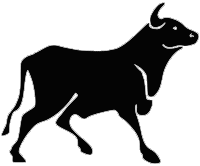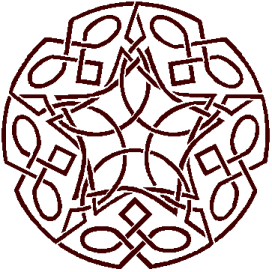The Cornish Pasty |

|
How meat got into the original pasty trees is a delicate matter. Young maids should move on to a different electric web page.
|

|
This used to be one of life's mysteries, but as life and science move on, many things are being explained. The same is true about the pasty tree.
When flowering plants first appeared in the fossil record, 140 million years ago (see HERE ) the pasty tree wasn't first - it was a water lily. That was in the mid-Cretaceous Period of the Mesozoic Era.
At the moment, the fossil record for the pasty tree is sparse. Only a few pieces of charcoal from the Stone Age have been suggested as coming from the oldest known pasty trees.
To show how behind we can be - the Clouded Leopard of Borneo (also see HERE) has only just been declared a new species of big cat. They have been known for 150 years but nobody knew what it was!
It d'be the same with the pasty tree - I took a Visitor into the orchard once to see Father's pasty trees and he didn't recognise them at all! (see HERE).
When the pasty tree first evolved it was just a plant. Its "fruit", the pasty, would have been a small, sad thing, and would have been a purely vegetarian job - it would never have passed for a proper pasty.
The first pasties produced by the trees came from mutations and accidental trans-specific implants of DNA from potato, onion and turnip/swede plants. We believe the skin was originally a hard shell like a coconut. Fossils of these have been found, washed up on beaches in Cornwall (they look a lot like fishing floats, except that they are small, black, hard and shaped like a pasty).
Gene implants occurred during geological events at the edges of the continental plates as they ground together, sometimes melding different organisms together. Some organisms perished and some survived and some were changed. This horizontal gene transfer is very important in nature.
In fact, gene transfer between species is surprisingly common.
The other scientific possibility was cross-pollination by the evolving bees and other insects.
Apparently, all evolving organisms experiment within their environment to find the best evolutionary advantage for the furtherance of their own species. In other words, the bees and other insects hadn't really got their acts together at that time.
Sometimes, the result of cross-pollination is a hybrid and as this goes along over millions of years, new characteristics and even whole new plants and animals evolve. This is where the pasty tree came from.
{We now have photos of a modern hybrid Cornish/Devonian pasty HERE}
The genetic contributions (i.e. DNA) from the potato, turnip and onion plants got into the pasty tree through either, or perhaps both, of those evolutionary mechanisms. We just don't know.
Now to the meat of the matter - and young maids really should move on at this point to a different electric web page because this becomes a delicate matter ...................
 |
|
Nearly everybody have seen cows mounting cows - on the land we call it "bulling". It means the cow on top is ready for the bull and its a very useful sign for the farmer to see because hours are precious (there is an explanation on this electric web page - search for "standing heat").
Any young maids reading up to here, really MUST MOVE ON NOW .....
Now, a bull in a field on his own, without cows, WILL get amorous, or "a bit frisky" as we d'say.

When a bull is amorous, nobody d'say "No" and if there are no cows, then the nearest tree will do. It is like a man feeling the need for a tree sometimes, but for a different reason, but 'tis anatomically close. What we believe happened was that an early Stone Age farmer put his bull in the pasty grove and then it happened - the meat got in the tree (in this case, the pasty tree).
We believe it was a bull and a pasty tree because the early pasties were all beef pasties. Lamb pasties came later and are culinary inventions.
This might sound to you like a Cornish "story" but it is not far-fetched at all. Not like the luminous mice they have now - they came about by crossing a mouse with a luminous jellyfish - see HERE!
Now, that DOES sound like a tall story, but 'ee idn't Cornish.
'Ee's also bleddy true - like the pasty tree!
Now you know a bit more about the Cornish pasty.

Acknowledgement - Bull animation
by courtesy of Animationlibrary.com
other gifs c/o Feebleminds-gifs.com
& Joellessacredgrove.com

|
|